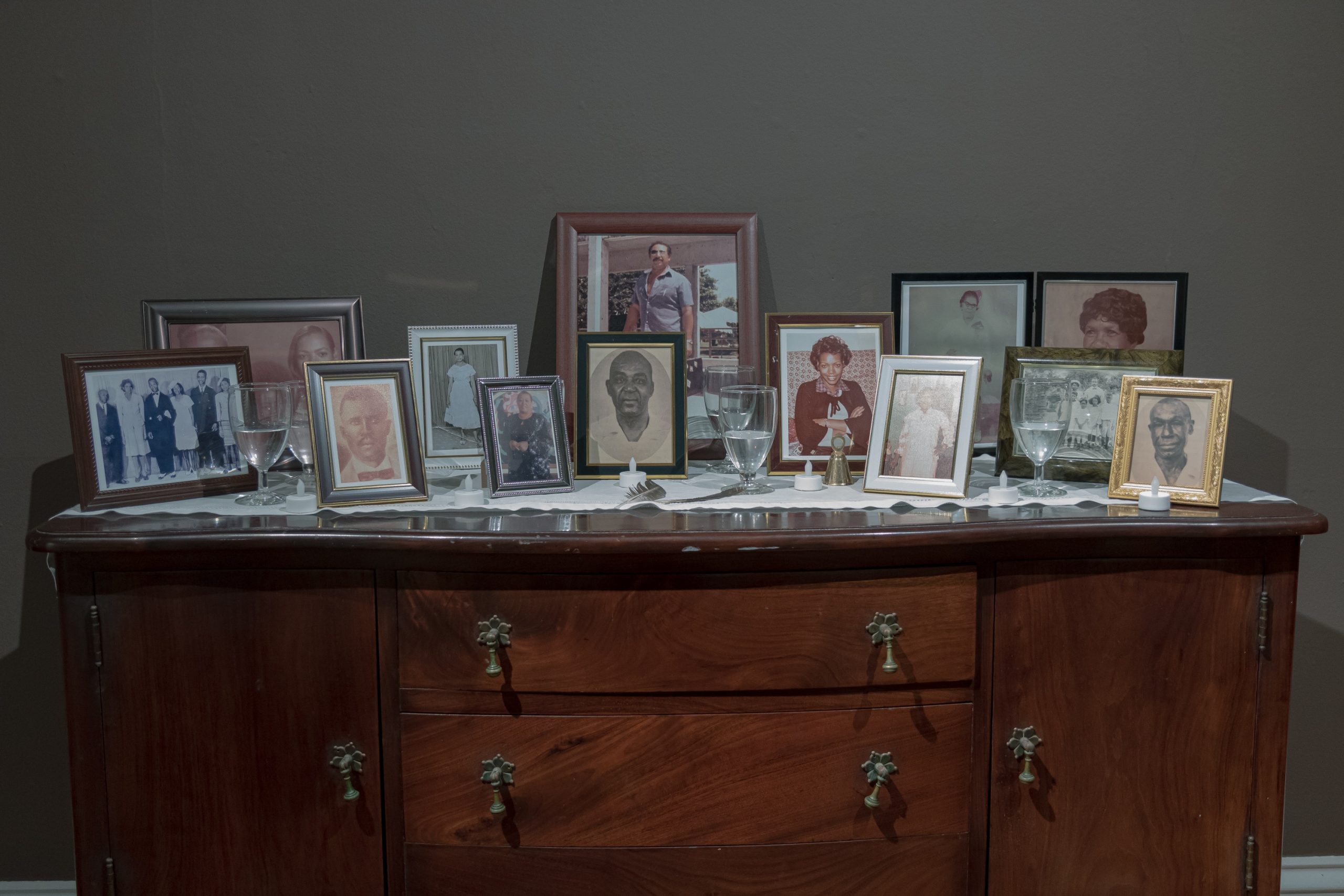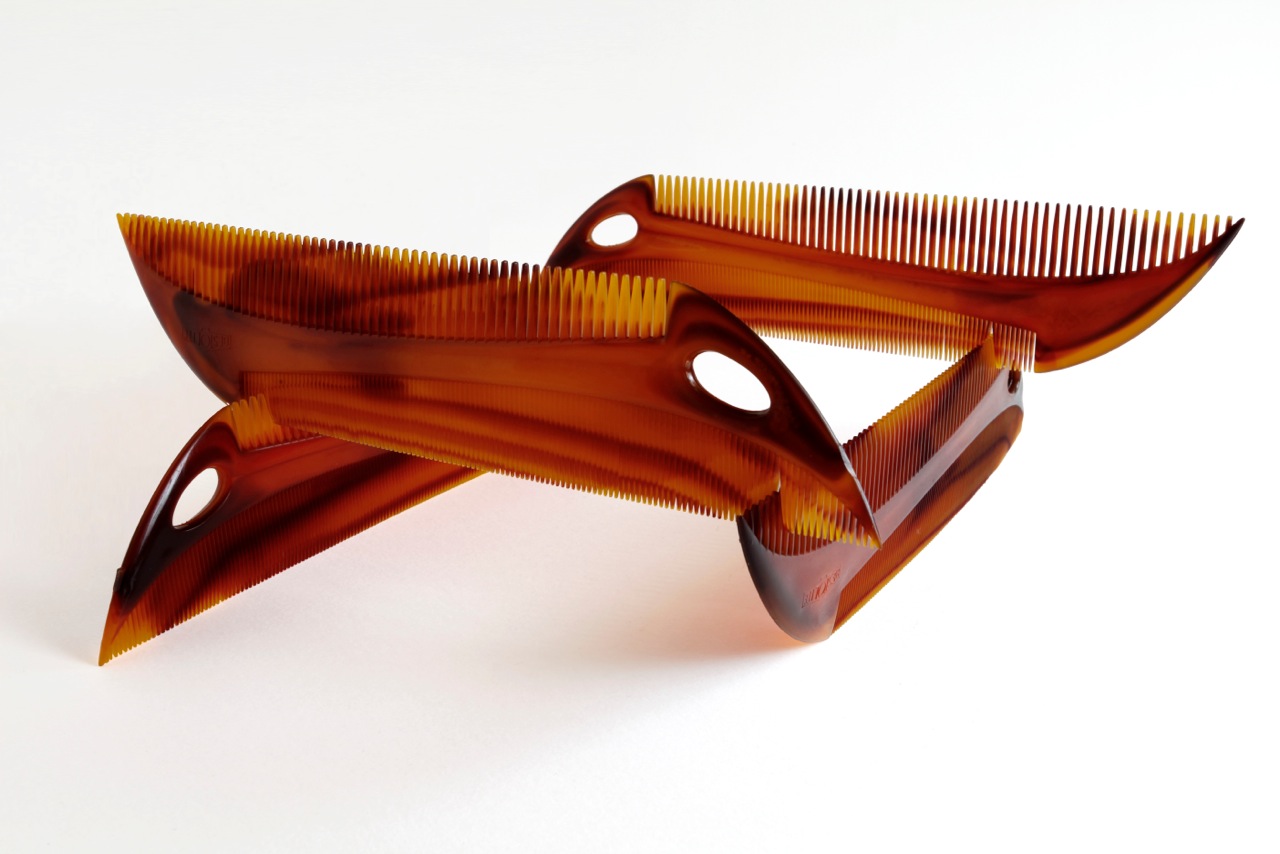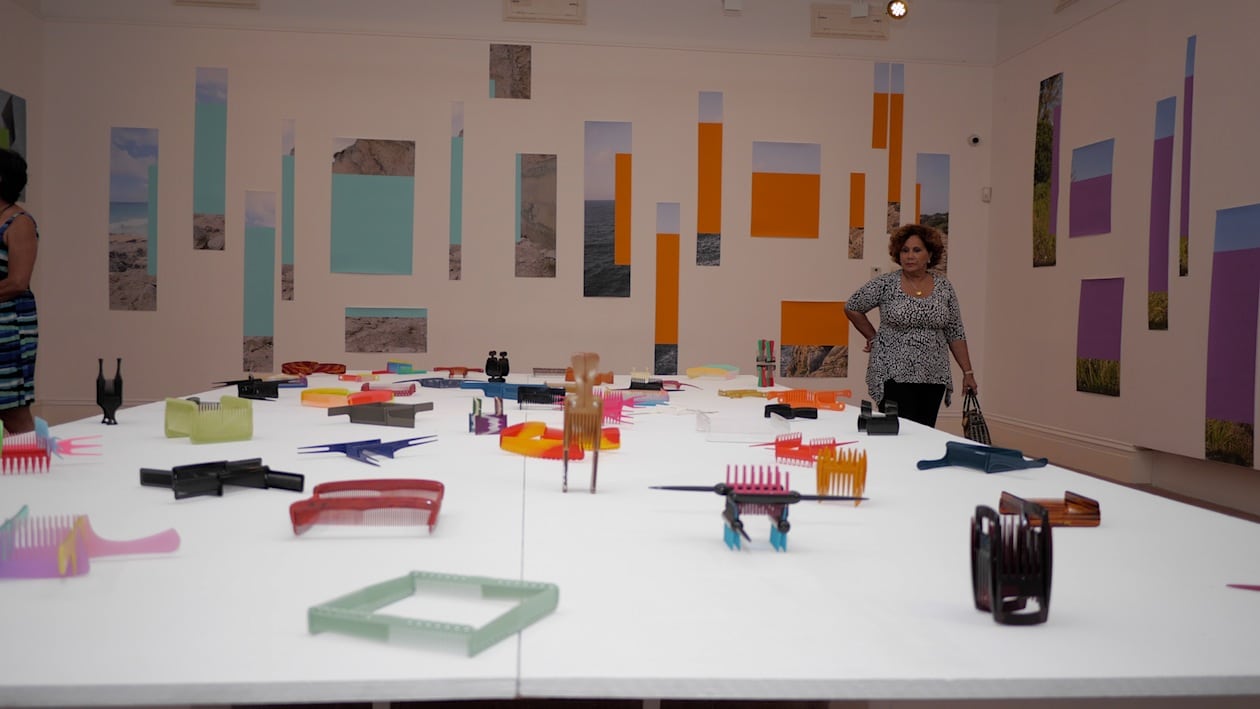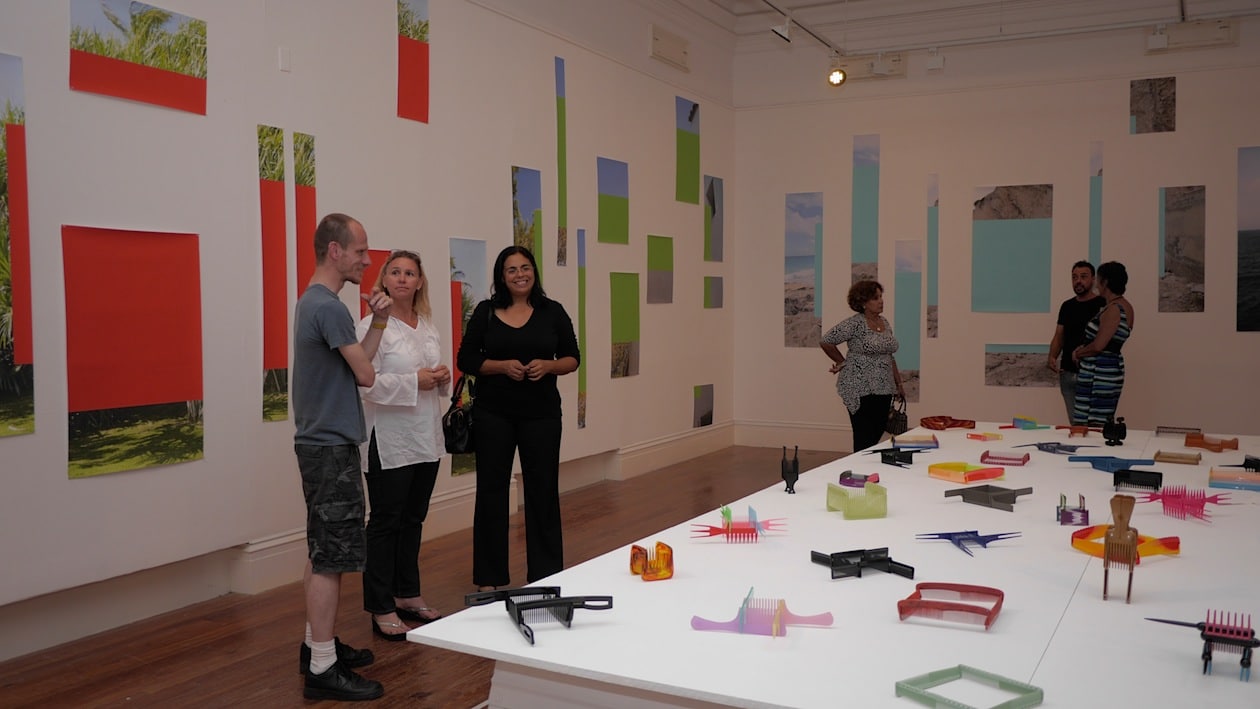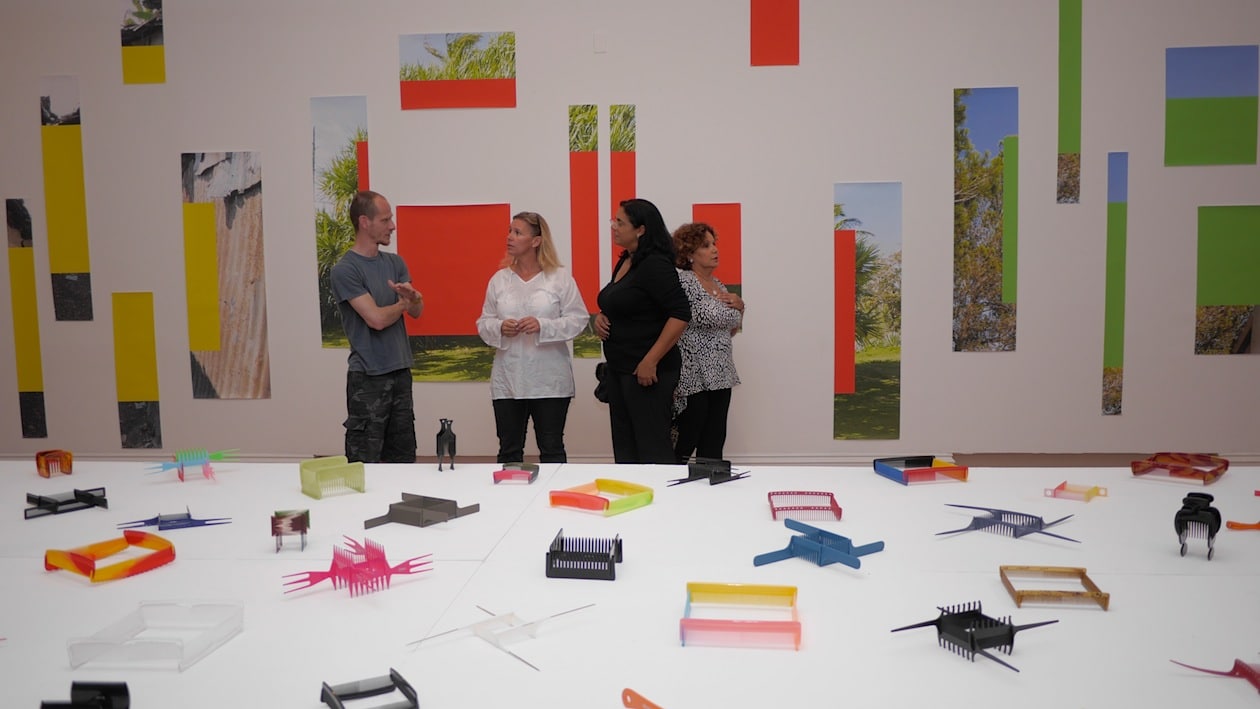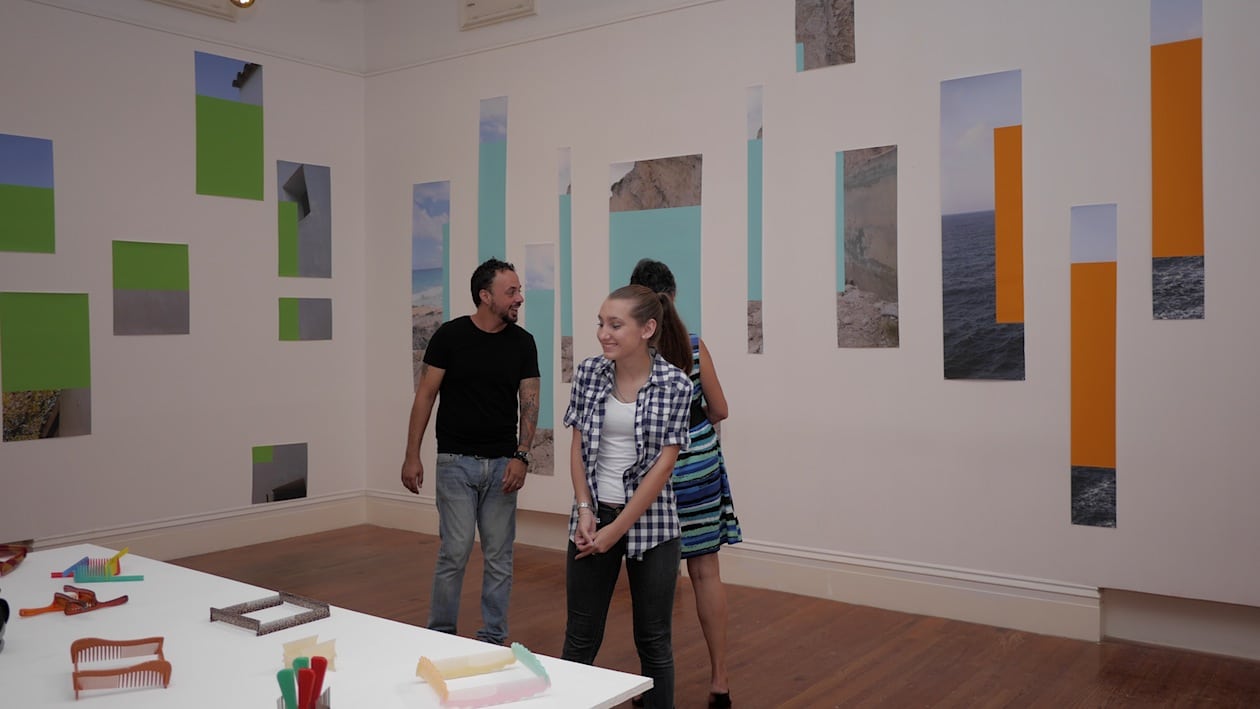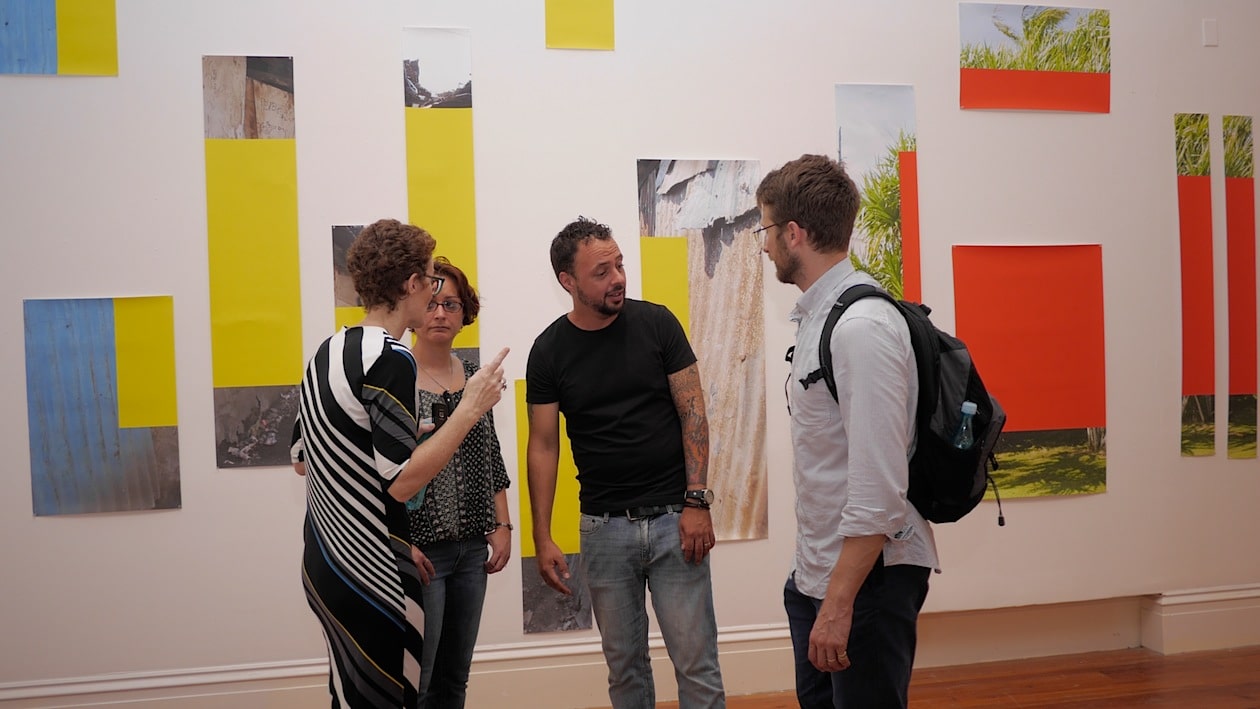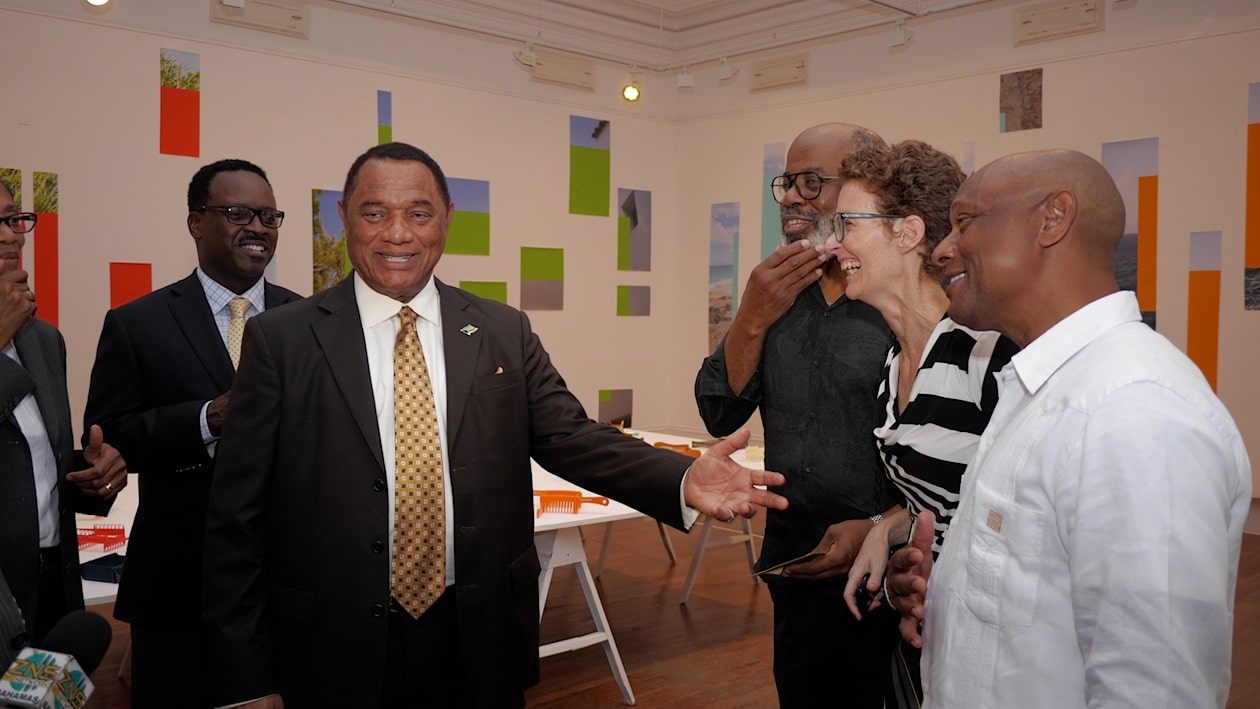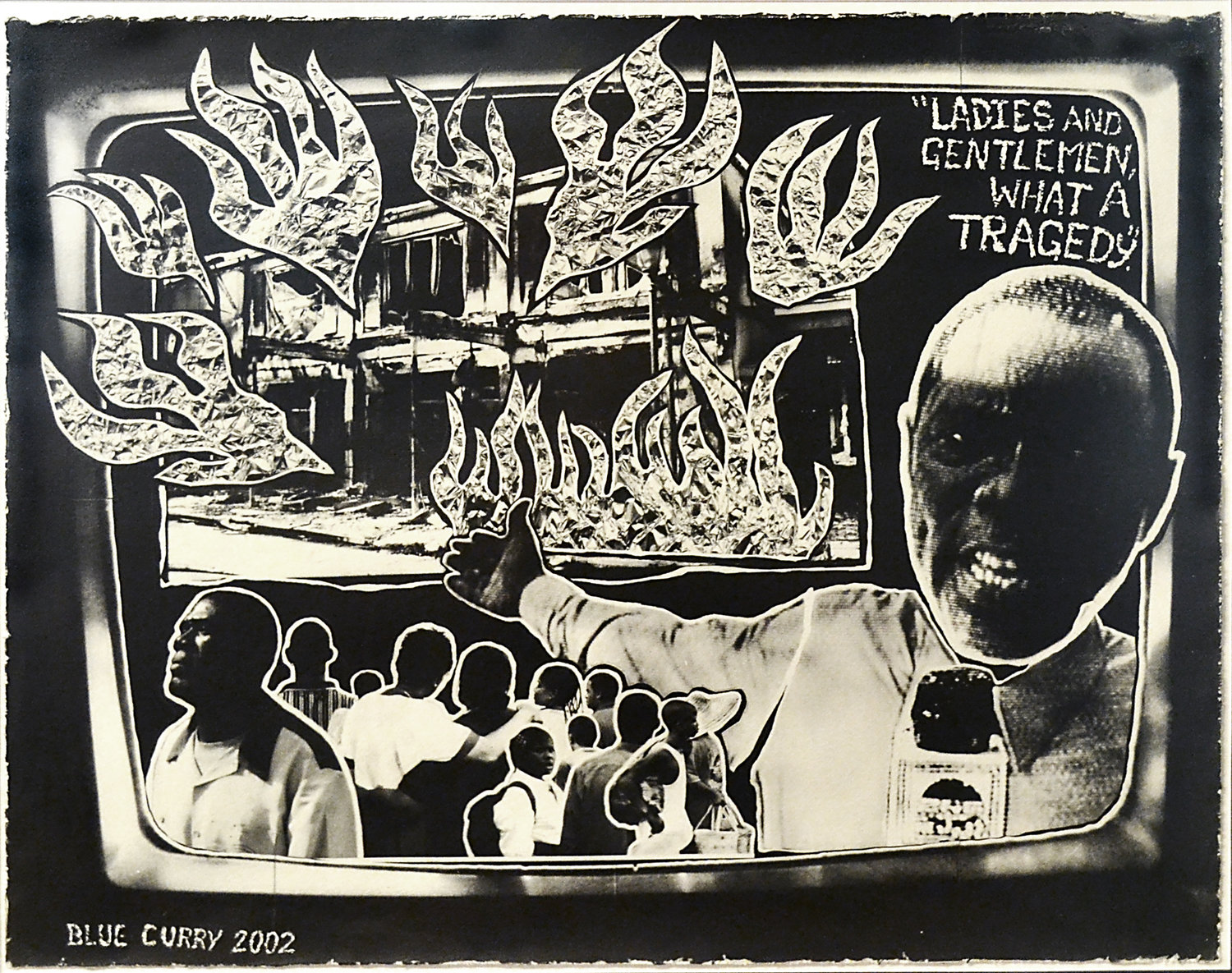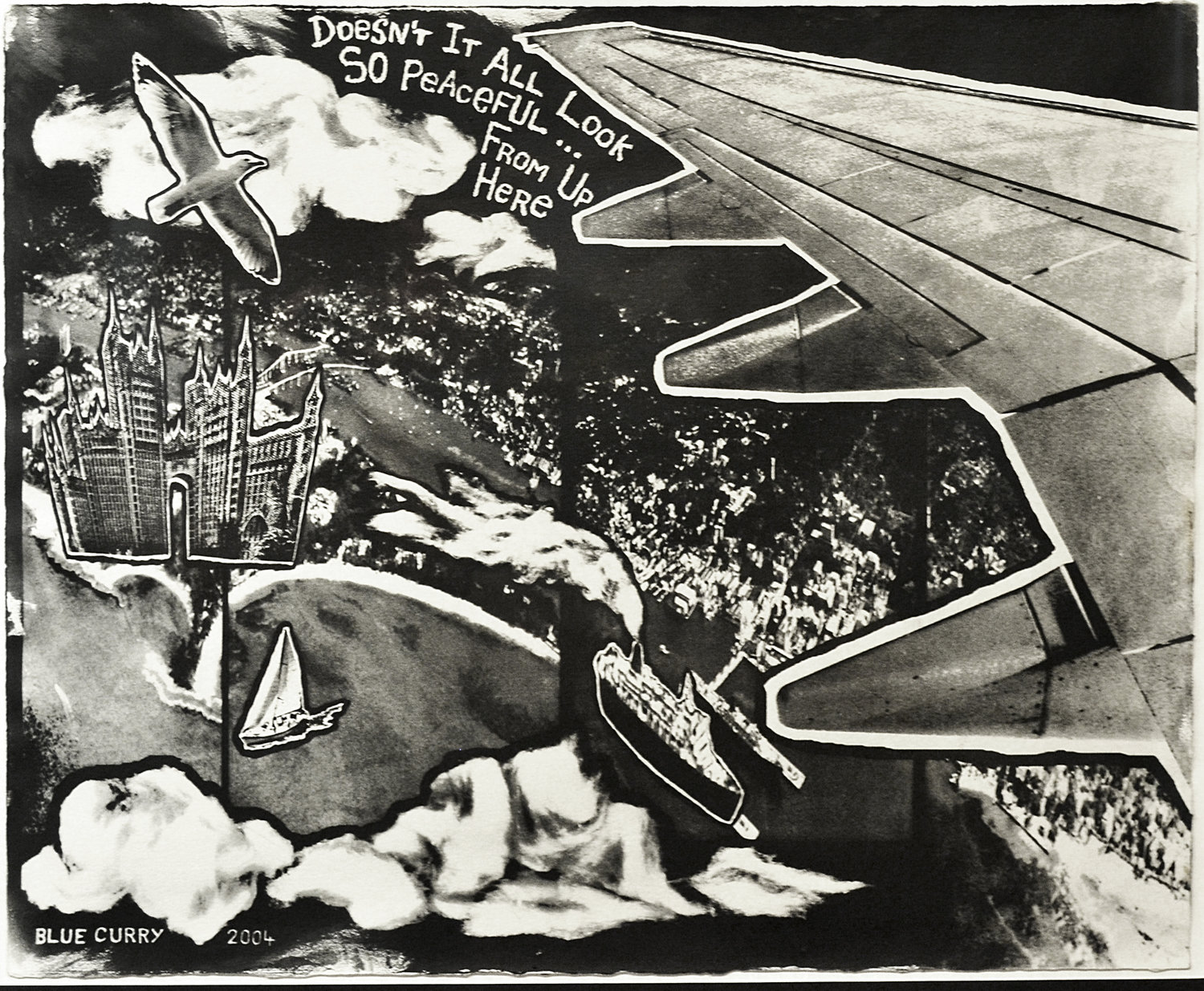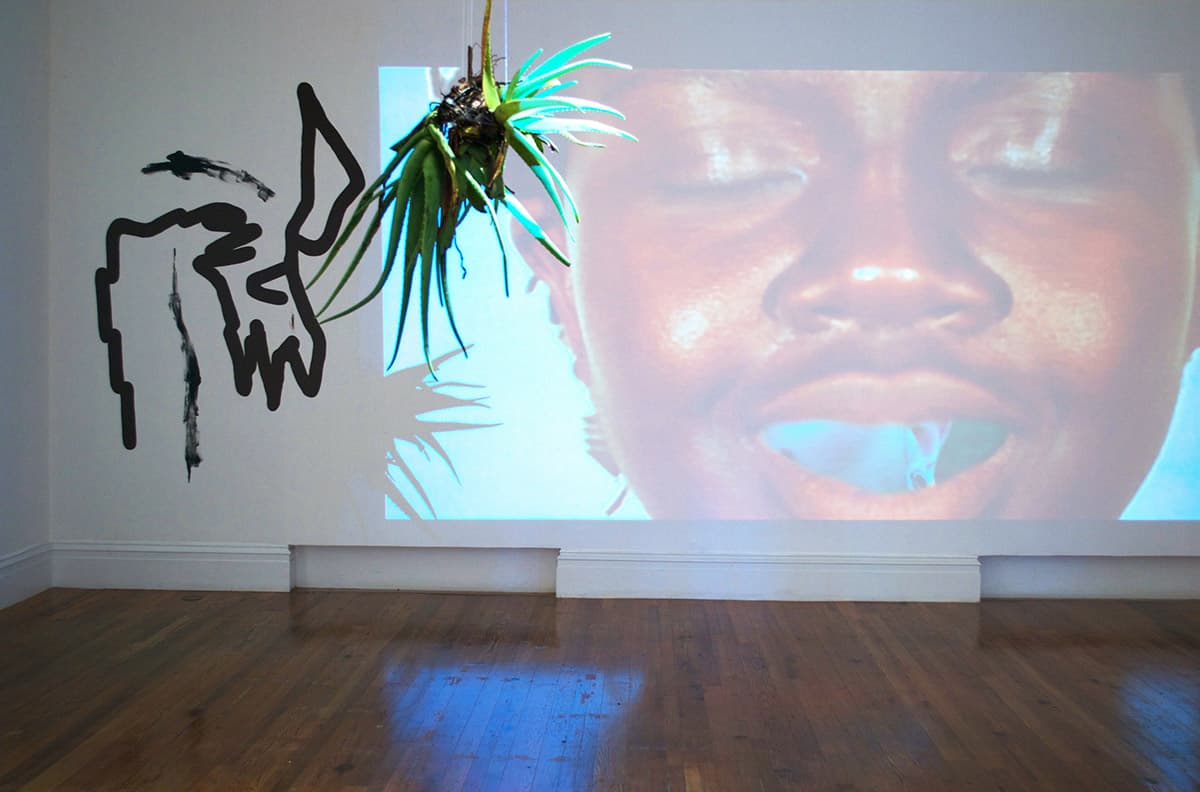50|50
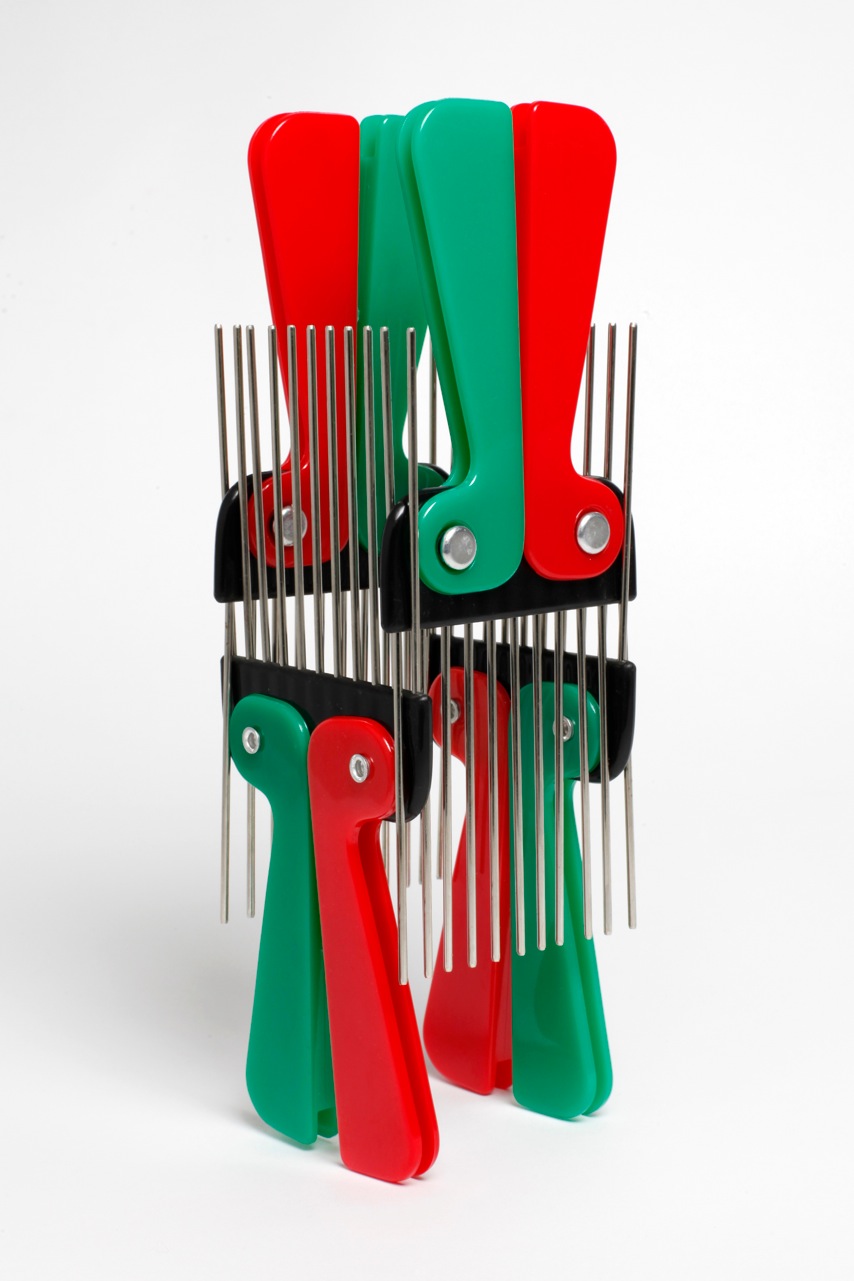
Overview
Dates
2 June–29 July 2015
Location
NAGB, Floor 2
T1 Gallery
Part of → Double Dutch · Series 1
The Double Dutch series represents a landmark initiative by the National Art Gallery of The Bahamas, designed to foster collaboration and dialogue among regional artists. This innovative platform brings together creators who, while sharing historical and cultural ties, are often divided by geography and language. By encouraging partnerships built around shared personal, political, and conceptual themes, the project seeks to provoke fresh perspectives on contemporary Caribbean identity. Through these exchanges, Double Dutch highlights the value of creative synergy in navigating the complexities of the region’s history, economy, and cultural practices.
For the inaugural Double Dutch, Bahamian-born, London-based artist Blue Curry and Bermudian artist James Cooper present their collaborative body of work, 50|50. Drawing inspiration from the jump-rope game “double dutch,” the project uses the game’s requirement for balance, momentum, and shared energy as a metaphor for creative exchange. Curry and Cooper, who previously worked together in 2014 for the Transforming Spaces exhibition After the Flood, build on their shared history to explore ideas of conceptualism, tropicality, exoticism, and minimalism. Their contributions engage viewers with themes of disruption, adaptation, and the reinterpretation of familiar cultural tropes.
James Cooper
Bermuda
Cooper’s 50 digital images explore the boundaries of photography, blending abstraction with representational qualities. His work critiques the aesthetics of the tropical and sublime, while interrogating themes of memory, identity, and transformation. Using a low-tech, experimental approach, Cooper creates layered compositions that reflect the contradictions and fluidity of Caribbean life.
Blue Curry
The Bahamas
Curry’s 50 untitled works, crafted from repurposed industrial hair combs, reimagine these objects as cultural artifacts. His practice challenges assumptions about exoticism and the commodification of Caribbean identity, offering playful yet incisive critiques of tourism and representation. Through transformation, Curry creates objects that spark reflection on authenticity and cultural narratives.
50|50 is curated by Holly Bynoe, Chief Curator.
In context
Double Dutch pairs a Bahamian artist with an artist from the wider Caribbean to produce ambitious, collaborative bodies of work. The programme supports cross-cultural exchange, highlighting shared histories, creative practices, and sensibilities across the region and its diaspora.
